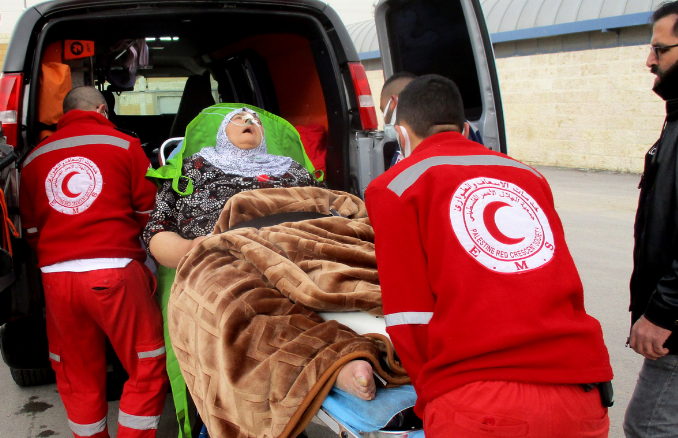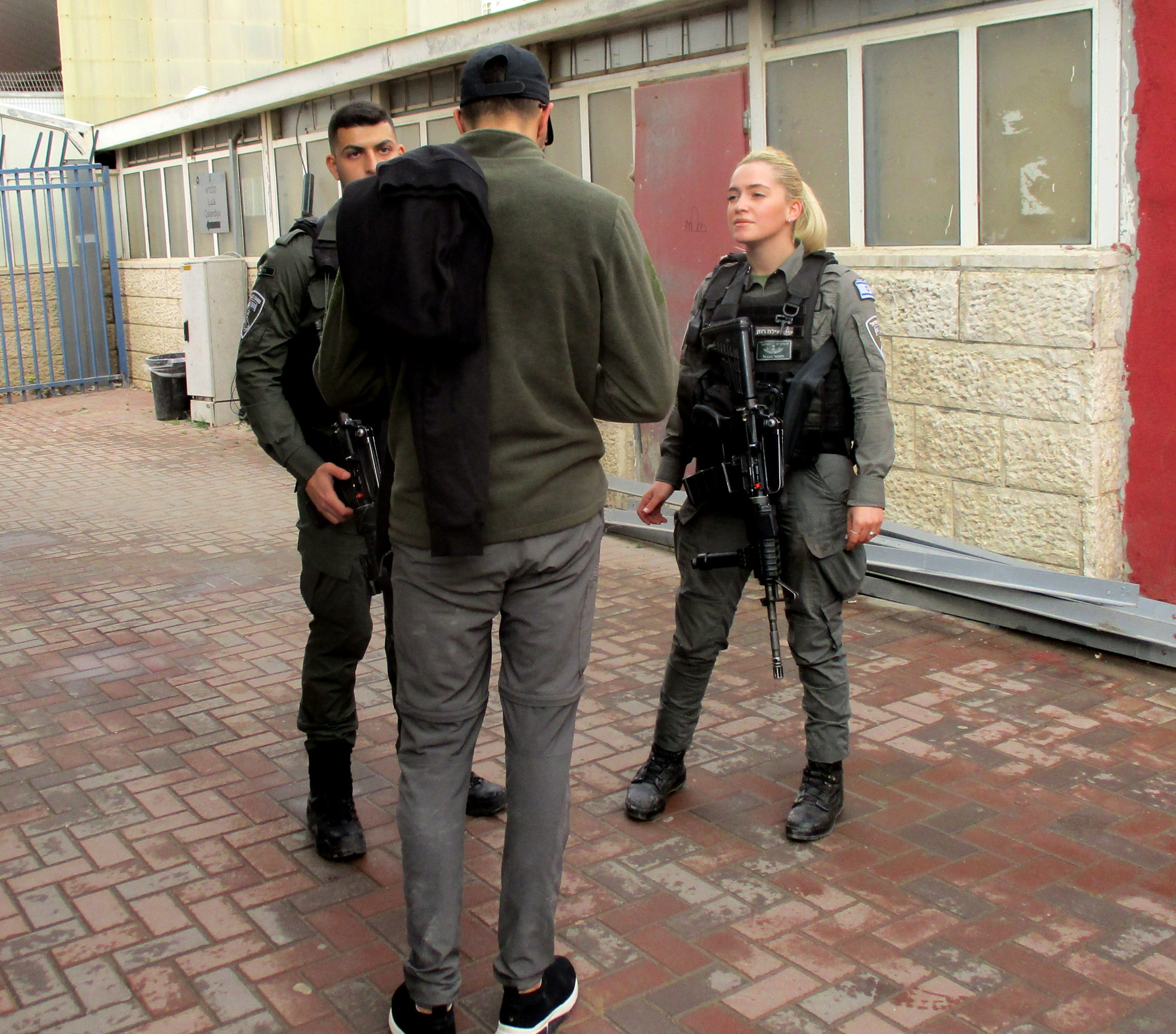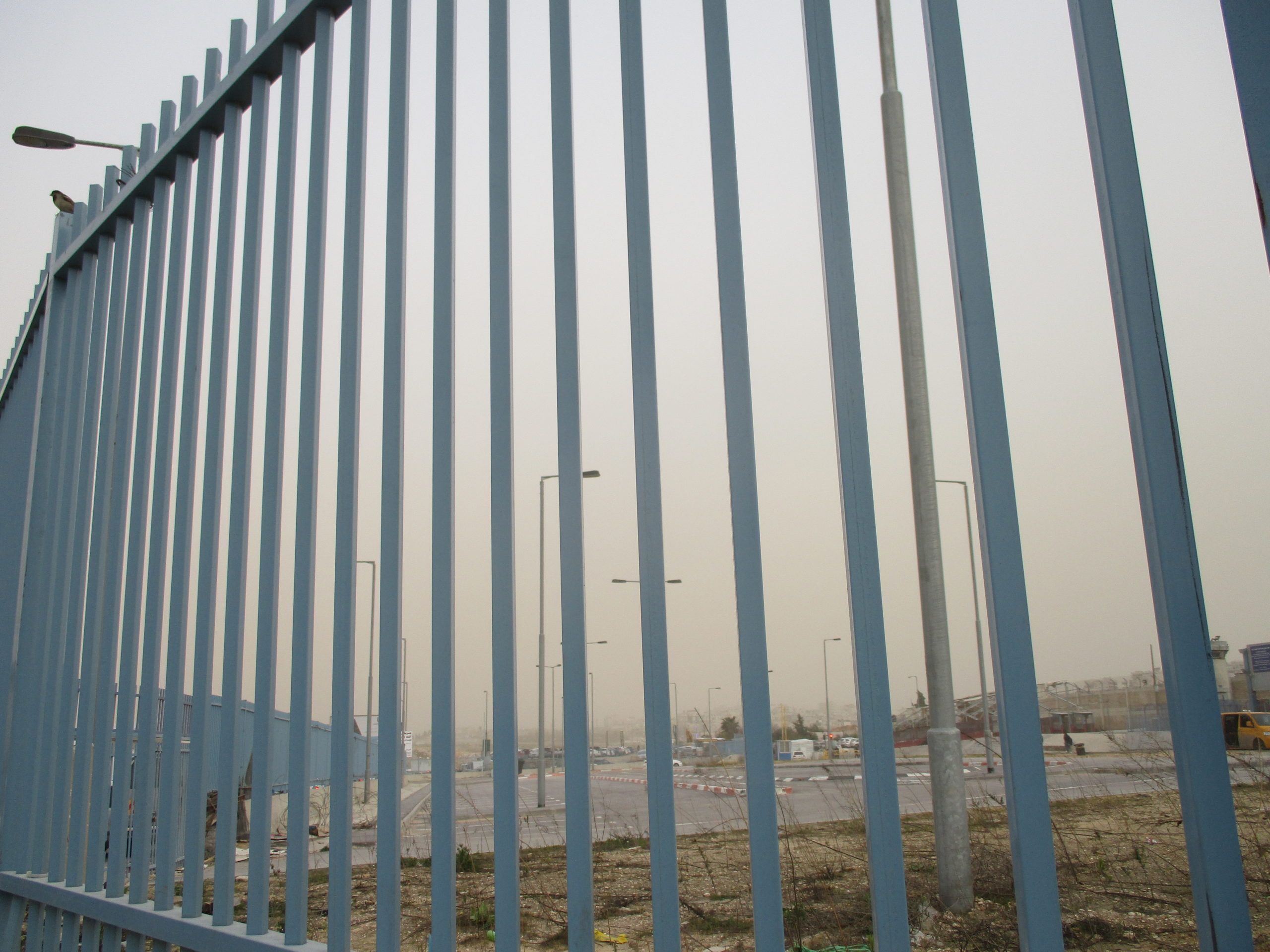
Amidst haze and dust rising, a Palestinian woman waited inside an ambulance for the arrival of another ambulance from Jerusalem.
I do not know which kind of illness the woman had, but she looked exhausted and visibly sick. The woman was barely conscious, connected to an oxygen tank and her body was extremely swollen.
The woman was accompanied by her son, who told me that her oxygen levels had dropped dramatically. He explained to me that she needed to return to the Sha’arei Tzedek hospital in West Jerusalem, where she had already been treated in the past.
The Palestinian woman comes from the village of Kufr Aqab. She holds a blue (Israeli) ID, and she is a ‘permanent resident’. This should put her in a ‘privileged’ position among the millions of fellow Palestinians living between the river and the sea. Indeed, Palestinians with an Israeli ID are technically ‘free to move’. However, it all depends on which side of the apartheid wall they live in.

Kufr Aqab is cut off from the rest of Palestine by the Israeli separation wall. Its inhabitants do not receive services from the Palestinian Authority because their territory does not fall into its jurisdiction, despite the fact that it is only two kilometers away from Ramallah.
Israel does not provide its services either, despite that territory being annexed.
In the meantime, Israel does not allow ambulances to freely cross the wall and move between Jerusalem and that area.
Therefore, this woman cannot be directly transported from her home to the hospital. Instead, she has to be tossed from one stretcher to another, going through several medical teams and ambulances.
Not far from where the sick Palestinian woman was waiting to be moved to the hospital, Israeli soldiers were standing like armed hunters waiting for their prey.

They stopped several Palestinians who were returning after a hard day’s work in Jerusalem, and inspected their papers and transit permits, hoping to catch somebody without the needed permit.
These areas are labeled ‘security hazard zones’. The truth is, the real security threat is represented by the Israeli authorities themselves.
(Translated from Hebrew by Tal Haran)
(Edited by Romana Rubeo)



